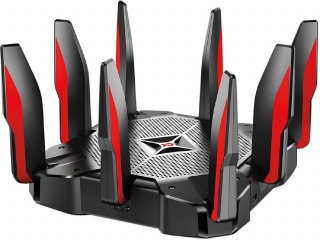Yes, Your Wi-Fi Router Can Be Hacked. Here's How to Secure It.
Put simply, if your router is compromised, the security of ALL of your devices that use the router is in danger. How can you stay safe?
We generally focus so much of our undying attention on our phones, tablets, and laptops that we really give little other than a passing thought to our Wi-Fi routers.
In this day and age, this can be outright dangerous. Yes, in case if you’re still wondering, your router can indeed be hacked, which can lead to a host of unfortunate situations like identity theft or the spread of vicious malware. Your network can also be used to attack other networks.
Since we now have a better understanding that these types of threats and breaches are out there, it is best to have a sensible plan of action to protect yourself. However, many people still do not put forth the necessary effort to safeguard their routers from lurking hackers.
Put simply, if your router is compromised, the security of ALL of your devices that use the router is in danger.
One particular study conducted by the security company Avast discovered that about 80 percent of Americans do not properly secure their routers.
Do keep in mind that no router is 100-percent hack-proof. But there are certain steps one can take to minimize such threats. First off, you should always do your homework before settling on a particular router, because some models do possess better inherent protections against hackers.
If you know that you’re the forgetful type, you should definitely purchase a router that provides automatic updating. In some instances, if you don’t have the latest security or firmware updates downloaded, your router can be a relatively easy target for hackers, who are always on the lookout for weaknesses to exploit. You can always check the manufacturer’s website if you aren’t sure you have the latest updates.
Some of the easier common-sense steps to take are to have a strong password and to reboot the device once in a while. Try to pick a password that can’t be guessed easily. It doesn’t even have to be a real word, and try to mix in various capital letters, symbols and numbers, which will make it that much more difficult to crack. Rebooting your router has shown that it can disrupt malware and help identify malware-infected devices.
Finally, take the time to disable remote administration or management. This magical function gives you the ability to access and use your computer from another location. Unfortunately, this also makes it easier for hackers to manipulate your computer in real-time.
Ethen Kim Lieser is a Tech Editor who has held posts at Google, The Korea Herald, Lincoln Journal Star, AsianWeek and Arirang TV. He lives in Minneapolis with his wife and two cats.

